The Marwari horse, with its distinctive inward-curling ears forming a graceful arch when alert, stands as one of India’s most recognizable native horse breeds. These curved ears aren’t merely an aesthetic quirk but a fascinating evolutionary adaptation with historical, cultural, and practical significance. Originating from the Marwar region of Rajasthan, these horses have been prized by warriors and nobility for centuries. Their unique ear shape instantly identifies them among equine breeds worldwide and has contributed to their mystique and value throughout Indian history. This remarkable feature represents just one aspect of what makes the Marwari horse an extraordinary example of selective breeding and natural adaptation.
The Anatomical Structure of Marwari Ears
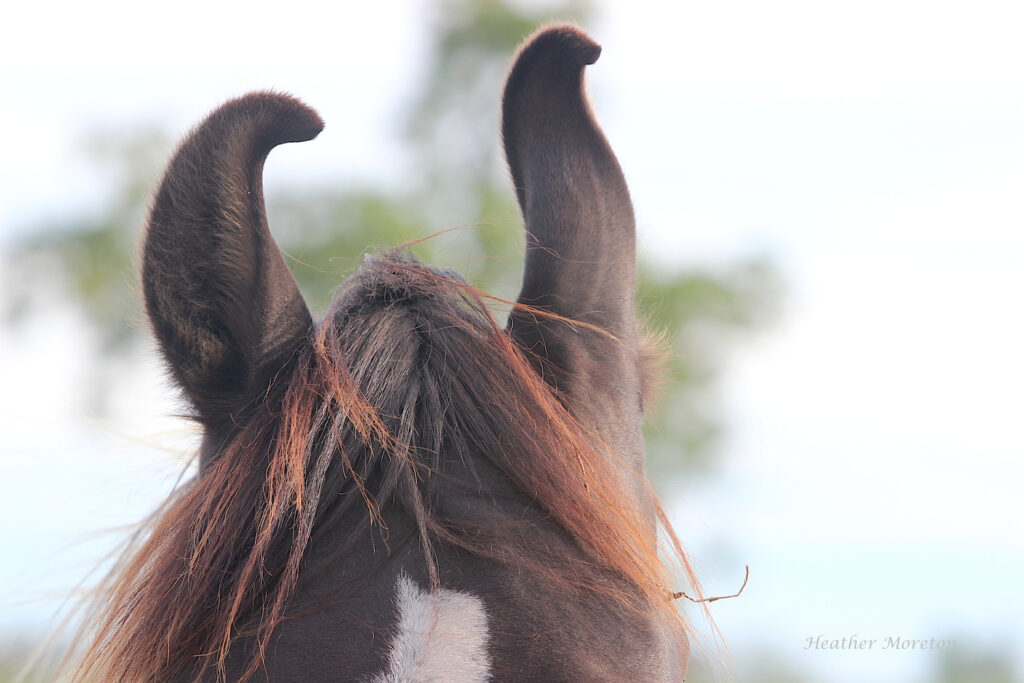
The Marwari horse’s distinctive ears result from a specialized cartilage structure that naturally curves the tips inward until they meet or even overlap. Unlike other horse breeds with straight or slightly curved ear tips, the Marwari’s ears can rotate a full 180 degrees, creating their characteristic loop when the horse is attentive. This unique anatomical feature becomes visible when the foals are just a few months old and becomes more pronounced as they mature. The curvature is caused by specialized elastic cartilage in the upper portion of the ear that maintains this shape permanently throughout the horse’s life, regardless of the ear’s position. Anatomically, these ears contain all the same functional components as other equine ears but with this distinctive structural modification.
Evolutionary Advantages in Desert Environments
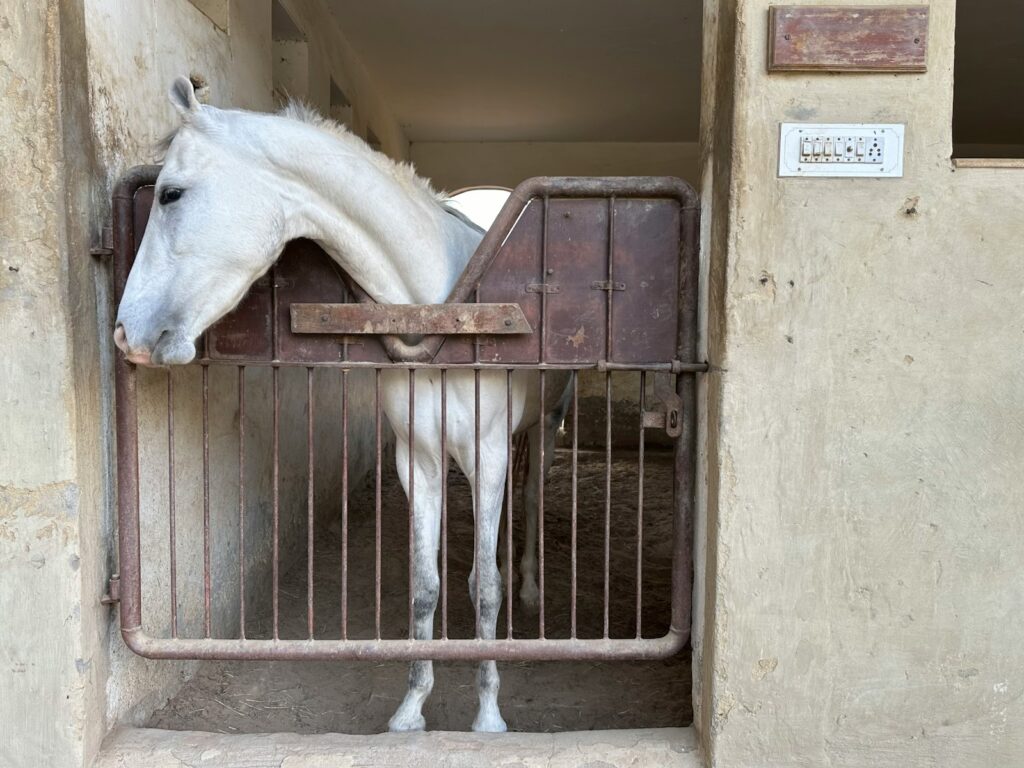
The inward-curling ears of the Marwari horse evolved as a practical adaptation to the harsh desert environment of Rajasthan, where the breed originated. These curved ears provide enhanced protection against blowing sand and dust during the region’s frequent sandstorms, preventing abrasive particles from entering the sensitive ear canal. The unique shape also creates a natural barrier against the extreme desert heat, helping to regulate temperature around the delicate auditory structures. Scientists believe this adaptation improved survival rates in the arid climate where these horses developed, giving them an evolutionary advantage over horses with standard ear shapes. Additionally, the curved structure may help deflect the harsh desert sun while still allowing the horse to maintain its exceptional hearing capabilities in open terrain.
Enhanced Hearing Capabilities

The curved ears of the Marwari serve as natural sound amplifiers, functioning similar to satellite dishes that capture and funnel sound waves more effectively. This enhanced hearing ability proved particularly valuable on ancient battlefields, allowing the horses to detect approaching threats even amid the chaos of combat. The mobility of these unique ears enables Marwari horses to pinpoint sound sources with remarkable precision, rotating independently to track multiple sounds simultaneously. Researchers have observed that Marwaris can detect subtle sounds from significantly greater distances than many other horse breeds, giving riders a tactical advantage throughout history. Their exceptional auditory capabilities complement the breed’s natural vigilance, making them exceptionally alert mounts in any environment.
Historical Selection by Rajput Warriors
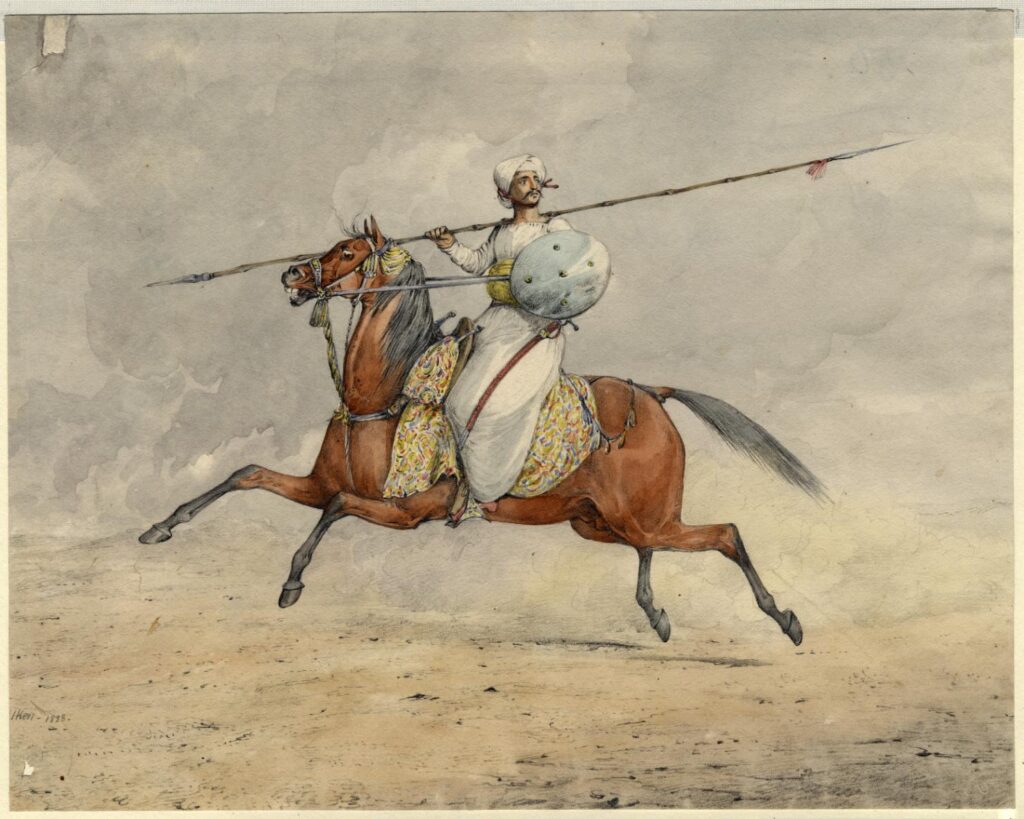
The distinctive ear shape of the Marwari was deliberately cultivated through selective breeding by the Rajput warriors who relied on these horses for warfare. Historical records indicate that Rajput cavalrymen specifically favored horses with more pronounced ear curls, believing this trait corresponded with greater courage and battlefield awareness. These warriors depended on their mounts to remain calm amidst the chaos of battle, and the superior hearing abilities conferred by the curved ears proved advantageous in detecting approaching enemies. Over generations, this selective breeding reinforced the genetic trait until it became a defining characteristic of the breed. Ancient texts from the region describe how the most valued war horses possessed ears that touched at the tips, creating a perfect arc above the horse’s head when alert.
Genetic Basis for the Curved Ear Trait
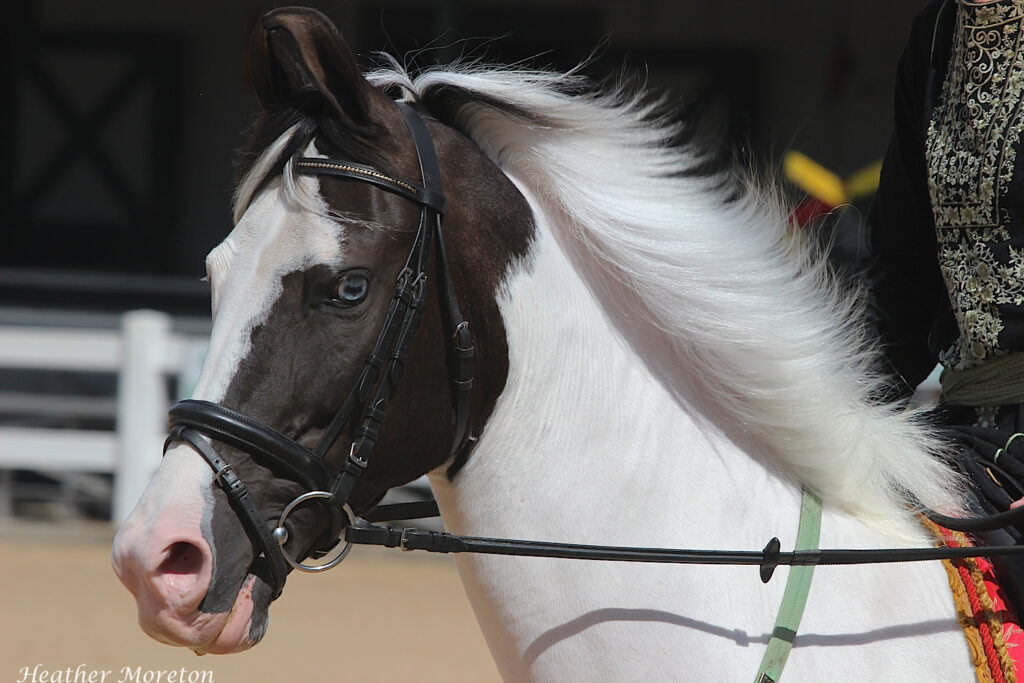
The inward-curling ears of the Marwari horse result from a specific genetic mutation that affects cartilage development in the outer ear structure. Modern genetic research suggests this trait follows a dominant inheritance pattern, meaning a foal needs to inherit the gene from only one parent to express the curved ears. DNA analysis has revealed that this genetic marker is unique to the Marwari and its close relative, the Kathiawari horse, both native to northwestern India. Breeding studies have demonstrated that when purebred Marwaris are crossed with other breeds, approximately 50-75% of offspring display some degree of ear curvature, though rarely as pronounced as in purebred individuals. The genetic basis for this trait represents one of the most distinctive breed-specific mutations in the equine world.
Cultural Significance in Indian Heritage
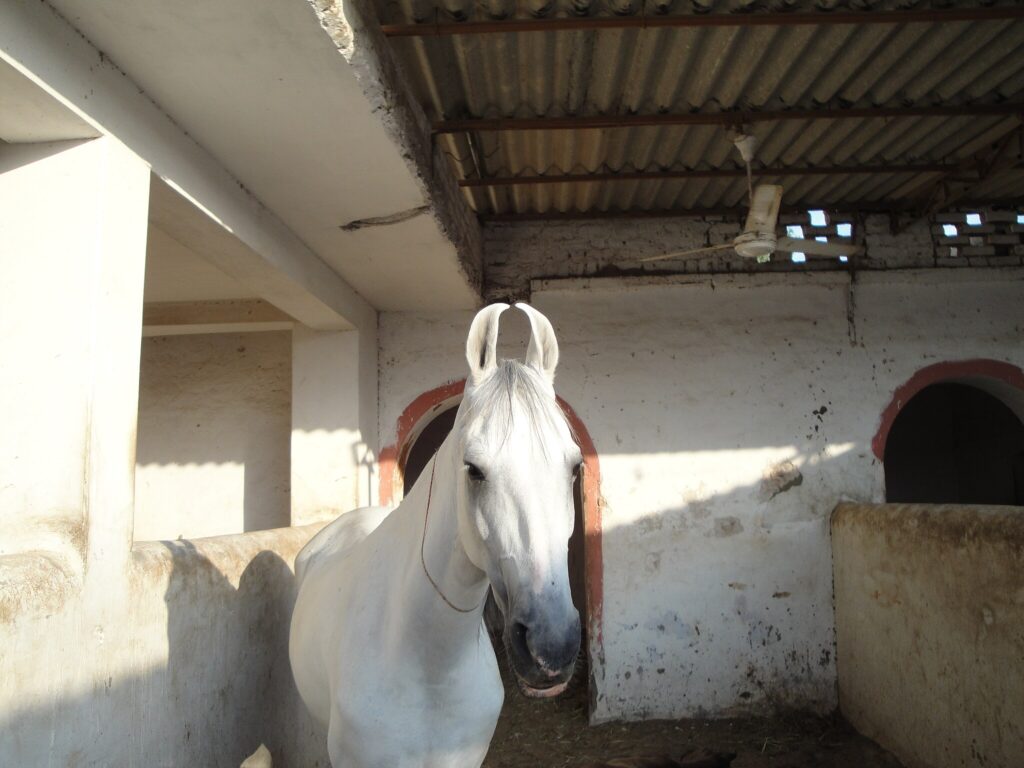
The curved ears of the Marwari horse have transcended mere physical traits to become powerful cultural symbols in Indian heritage. In traditional Rajasthani folklore, these horses are often depicted as divine creatures, with their curved ears representing a connection to the heavens and spiritual realms. Ancient paintings and sculptures throughout Rajasthan prominently feature these horses with exaggerated ear curves, emphasizing their importance in the regional identity. The Marwari’s distinctive ears have made them frequent subjects in Indian art, literature, and religious ceremonies, symbolizing nobility and divine protection. Even today, these horses play central roles in traditional wedding processions and religious festivals throughout northwestern India, their curved ears instantly identifying them as sacred and auspicious animals in the cultural landscape.
Comparison with Other Equine Ear Types
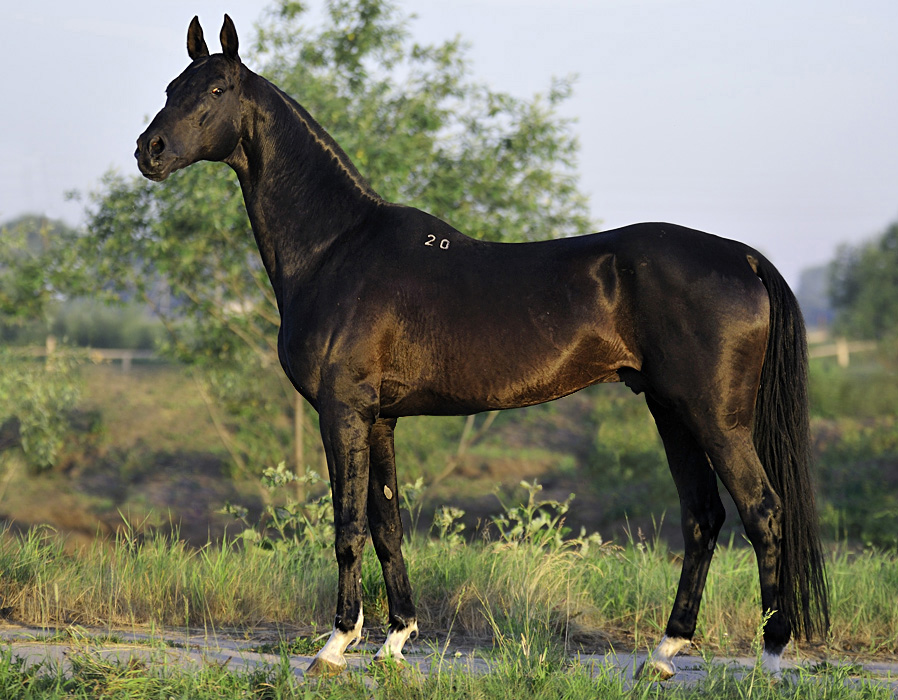
While many horse breeds display some variation in ear shape and positioning, none match the dramatic inward curl that characterizes the Marwari horse. Arabian horses, for instance, typically have concave ear profiles with alert, upright positioning, but they lack the distinctive inward curl. The Akhal-Teke, another ancient breed from Central Asia, exhibits slightly curved ear tips but without the complete inward rotation seen in Marwaris. The Kathiawari horse, closely related to the Marwari and also from India, is the only other breed that consistently displays similarly curved ears, though regional variations exist in the degree of curvature. Comparative anatomical studies have demonstrated that this extreme ear shape represents one of the most distinctive breed-specific physical traits in the equine world, immediately distinguishing Marwaris from all other horses.
The Role of Curved Ears in Breed Identification

The inward-curving ears serve as the most immediately recognizable feature for identifying authentic Marwari horses, functioning as a natural “breed marker” that cannot be easily imitated. Official breed registries and preservation programs list this ear shape as a mandatory characteristic for registration, with horses lacking properly curved ears being disqualified regardless of bloodline documentation. During traditional breed evaluation events in India, judges specifically measure the degree of ear curvature, with preference given to horses whose ear tips touch or cross when the horse is alert. This distinct physical trait has helped preserve breed purity through centuries of political upheaval and changing equestrian fashions. For conservation efforts, the ears provide a visual shorthand for identifying Marwaris even when detailed breeding records might be unavailable.
Care and Maintenance Considerations

The unique ear structure of Marwari horses requires specific care considerations to maintain proper health and functionality. Owners must regularly inspect the interior curves of the ears where moisture can become trapped, potentially leading to infections if not properly monitored. Cleaning protocols differ from those used for straight-eared horses, with gentle manipulation required to access all surfaces of the curved structure without causing discomfort. Veterinarians specializing in Marwari care recommend monthly inspection of the ear cartilage to ensure it maintains proper flexibility and form, particularly in young growing horses. Additionally, protective ear coverings designed specifically for this unique shape are often used during transportation or in exceptionally dusty conditions to prevent irritation while accommodating the natural curve.
Communication Through Ear Positioning

Despite their distinctive shape, Marwari horses utilize their curved ears for communication in ways similar to other equines, though with some unique modifications. When alert or curious, a Marwari will point both curved ears forward, creating a distinctive circular appearance that other breeds cannot replicate. During moments of annoyance or aggression, they flatten these curved ears against their heads, though the curl remains visible even in this position. Experienced handlers note that the mobility of Marwari ears allows for more nuanced communication signals compared to straight-eared breeds, with subtle degrees of rotation conveying specific emotional states. Researchers studying equine body language have documented at least fourteen distinct ear positions unique to Marwaris that serve as communication cues both to other horses and to perceptive human handlers.
Challenges in Modern Conservation Efforts

The distinctive curved ears that define the Marwari breed present both advantages and challenges in modern conservation programs aimed at preserving this unique equine heritage. While the visible marker makes pure Marwaris easy to identify, the genetic basis for extreme ear curvature appears linked to consanguinity in some breeding lines, requiring careful management to maintain this trait without increasing vulnerability to genetic disorders. Conservation organizations must balance preserving this distinctive physical characteristic while ensuring sufficient genetic diversity for the breed’s long-term viability. Additionally, some modern breeding programs have reported occasional cases where excessive selection for extreme ear curvature has resulted in cartilage malformations that affect ear functionality. Preservationists now employ genetic testing alongside physical evaluations to ensure that ear aesthetics don’t compromise the overall health and soundness of these magnificent horses.
The Future of This Distinctive Trait
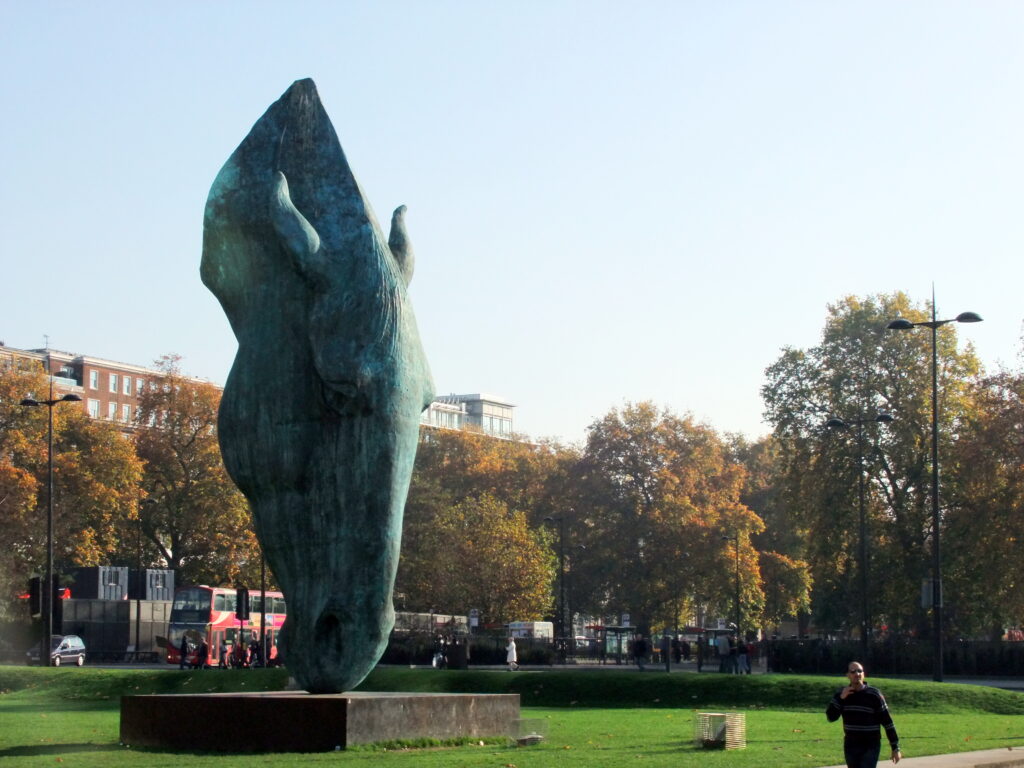
As the Marwari horse gains international recognition, the future of its distinctive curved ears seems secure, with dedicated breeding programs specifically working to preserve this unique characteristic. Genetic researchers are currently mapping the specific gene sequences responsible for the ear curvature to better understand how this trait can be preserved while maintaining genetic diversity. International breed standards now formally recognize the curved ear as the Marwari’s defining feature, ensuring that preservation efforts will continue to prioritize this characteristic. Tourism and cultural heritage programs in Rajasthan heavily feature these horses, creating economic incentives to maintain pure breeding lines with the classic ear shape. With growing global interest in rare and distinctive horse breeds, the Marwari’s curved ears will likely remain a celebrated example of natural adaptation and selective breeding for generations to come.
Conclusion
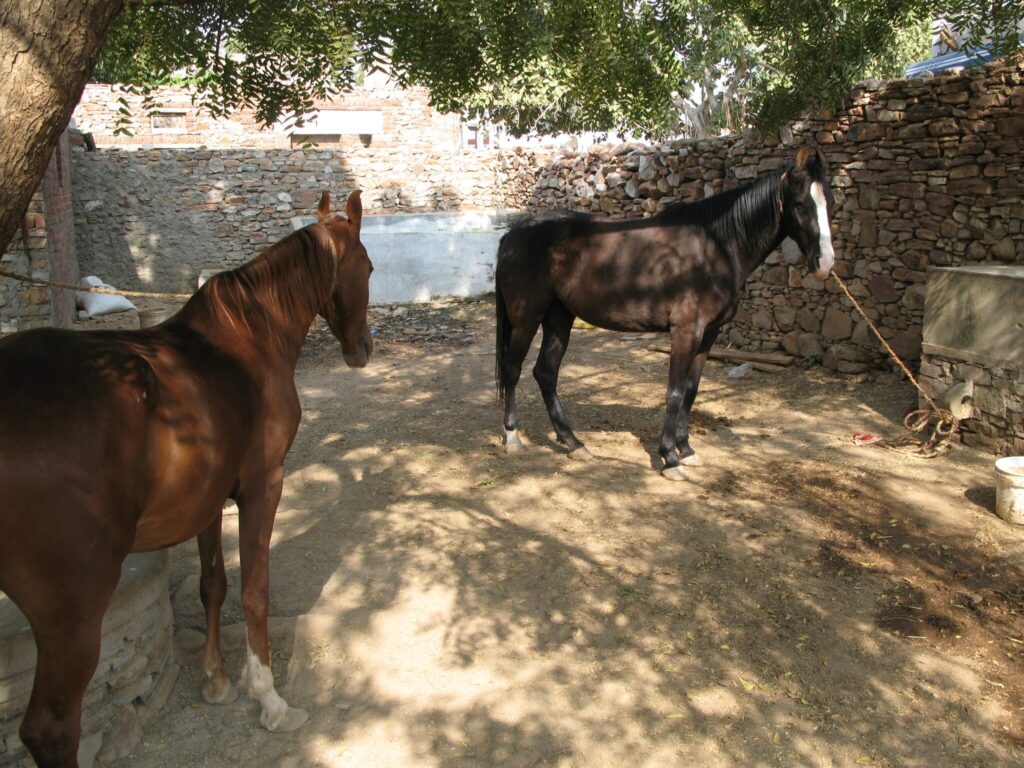
The inward-curling ears of the Marwari horse represent far more than a mere aesthetic curiosity. These distinctive appendages embody centuries of natural adaptation, deliberate selective breeding, and cultural significance. From their practical origins as desert adaptations to their role in battlefield awareness and their status as cultural icons, these unique ears tell the story of India’s equestrian heritage. As modern conservation efforts ensure the preservation of this ancient breed, the Marwari’s curved ears continue to captivate horse enthusiasts worldwide, standing as living testimony to the remarkable relationship between humans and horses through history. In these distinctive curves, we find a perfect union of form and function—a reminder that sometimes the most unusual characteristics emerge from the most perfect adaptations to specific environments and human needs.







